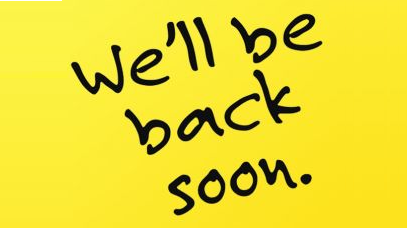I am going to tell someone else’s story to start today, and I am probably going to tell it badly. Someone I work with was telling me about this exceptionally intelligent coworker who struggled to convey their ideas to other people. Whenever you asked for an explanation, you would get a huge whiteboard loaded with dense and inscrutable data. If you ever said “I am not sure I understand”, they would double down on it and increase the depth and complexity. Eventually you would wind up with ten times the amount of information and almost none of the clarity. I am intermittently guilty of this. I have been known to answer a question with fifteen to twenty words that would have been better answered with a simple yes or no.
If you feel personally attacked by this description, I have good news. I am about to help you. I am going to talk about an important superpower for communicating with leadership. Welcome to using metaphors.
When someone in leadership is requesting information, they are often looking for a summary or distillation that is easy to understand. If they are trying to understand why something is really difficult to do in a production environment, lots of people have been known to say “Imagine trying to change an airplane engine while the plane is still in flight.” They immediately understand that you are trying to do something with a lot of potentially scary problems and logistics issues.
Expressing your complex problems in layman’s terms is a very important superpower. I once worked for someone who came from the hotel space. He really disliked the term technical debt, and did not quite understand what it meant.
One day I decided to tell him a story to see if it would help.
Imagine you are building a hotel. It needs to be open by Christmas. You have 100 floors under construction, and it will not be ready in time. You decide that in order to get the 100th floor done in time for the opening, you build the entire top floor out of drywall and two-by-fours. The hotel opens in time for Christmas, and it is a huge success. Things settle down a month later and someone from management comes and says that they need to add 5 more floors to the top of the hotel.
I asked him “Do you immediately start building on top of the penthouse built with drywall and two-by-fours?”
He looked at me and replied “No, that would be bad. You have to tear down the top floor and put in enough support for the five floors that get built on top of it”.
At that moment, he realized what technical debt was. Sometimes you need to go into an existing project, take apart some software that was rushed to market, and put it back together to support new features.
He never stopped disliking it, but he fully understood what it was, how it happened, and why we needed to get rid of it.
Everyone will have a different go-to for their metaphors. Some people want things explained in terms of sports teams. Other people like comparisons to airplanes. Some people think in terms of construction. It will take some to identify the metaphor that will work for each person.
This skill will become more important as your role becomes more senior over time. You should start practicing now. The next time you find yourself giving a complicated detailed explanation, see if you can describe in the abstract using hotels, airplanes, or your favorite sport. After all, the last thing you want to do is to show up for a championship game without having done any warm ups or training.
See what I did there?
Thank you for reading along this week. In addition to describing a superpower this week, I am also going to talk about a superproduct. I tried recommending Amazon Affiliate products I randomly found. I also tried recommending Amazon Affiliate products I buy and love. Today I am going to recommend a product I should have bought. Introducing the HP Neverstop Laser Printer. I am now on my third HP printer since 2001 and I have discovered that I regret buying the latest OfficeJet printer because it eats ink like a hungry family of rabbits in a carrot field (See? SEE?). I have fixated on the hundreds of dollars I could save over the years by buying a second printer. It would pay for itself in under three years. Next time you need to purchase a printer please bookmark this url. Future me will thank you for the nickel you have stolen from Jeff Bezos on my behalf.









